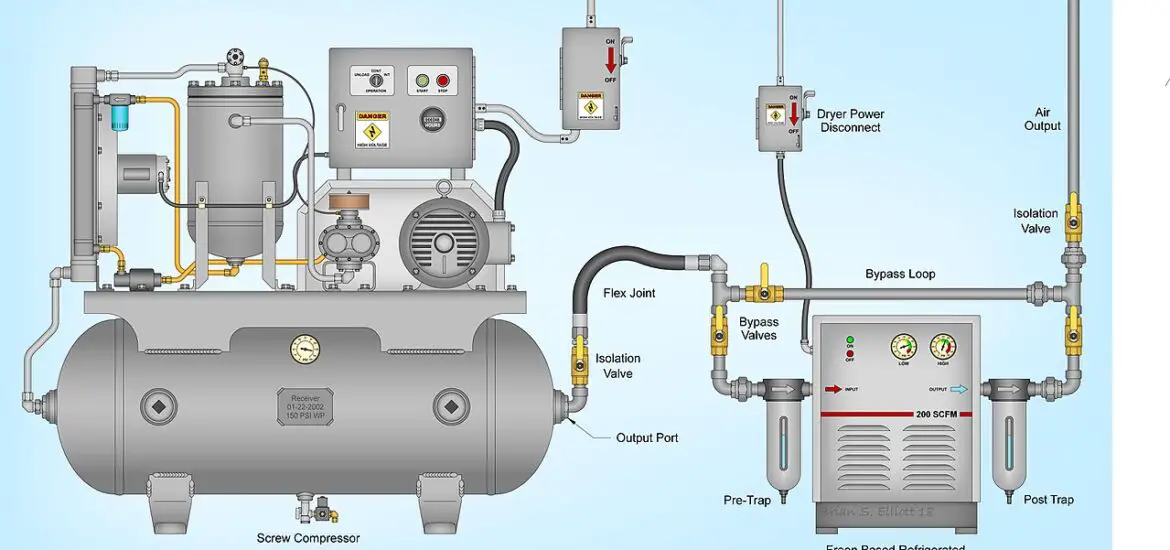Refrigerant filter driers are the heart of your cooling system. They’re pivotal for the longevity of your refrigeration system and you’d be surprised by how often they get overlooked. Think of them as the unsung workhorses, quietly doing their job while the rest of the system gets all the limelight. But hey, it’s high time we shed light on these indispensable components and delve into the intricacies of their functions, their location, and why their placement matters a whole lot. So sit tight, this is about to get chilly (in a good way).

Table of Contents
Introduction to Refrigerant Filter Driers
At the most basic level, a refrigerant filter drier is a device that removes unwanted particles and moisture from the refrigerant that circulates within the cooling system. They’re like the bouncers of your refrigeration club, not letting any uninvited guests in. And their prime location in the refrigeration circuit ensures they guard your system right where it counts.
Understanding the Function of a Refrigerant Filter Drier
What is a Filter Drier?
A filter drier, in the simplest terms, is a filtration device that keeps your refrigeration system running smoothly. Picture this – it’s like a coffee filter, separating the grounds (contaminants) from your morning cup of joe (the refrigerant). They come in different types like liquid line, suction line, and bi-flow, each with their unique role in the refrigeration dance.
Role of Filter Driers in a Refrigeration System
Now, we know what you’re thinking – what does a filter drier do? Well, picture a strainer keeping pebbles out of your smoothie. That’s basically what filter driers do. They protect your refrigeration system from contaminants and moisture, ensuring a cool, uninterrupted operation. And trust us, you want your system to be as efficient and long-lasting as possible, right?
Read more detailed articles on refrigerants here – Articles on Refrigerants: The Ultimate Guide to Understanding Them
Location of the Refrigerant Filter Drier in a Refrigeration System
General Placement of Filter Driers
So where does this important little guy hang out? Generally, the filter drier is located right after the condenser in the refrigeration system. But remember, its placement can vary depending on the type of filter drier you’re dealing with.
Placement of Different Types of Filter Driers
As for the specific types, a liquid line filter drier is usually found on the liquid line, while the suction line filter drier prefers the cool company of the compressor. The bi-flow filter drier? It likes to swing both ways, efficiently doing its job in heat pump systems. A bit of a multitasker, if you ask us!
Importance of Correct Refrigerant Filter Drier Location
Impact of Filter Drier Location on System Efficiency
So, you might be asking, does the placement really matter? Oh, absolutely! Imagine playing soccer without a goalie. Would it work? Not really. Similarly, the filter drier needs to be in the right place to effectively keep out the contaminants and moisture, ensuring your refrigeration system is always on its A-game.
Common Problems with Improper Filter Drier Location
And what if the filter drier is not in the right place? Well, that’s when things can start going south. The system’s efficiency might drop, or worse, the refrigeration system might sustain damage. It’s kind of like having the goalie at the wrong end of the field – not a pretty picture!
Conclusion
So, that’s the gist of it. Refrigerant filter driers are key players in your refrigeration system, and their location is absolutely crucial. So, next time you’re dealing with your cooling system, give a nod to the humble filter drier. After all, it’s working hard to keep everything cool!
Remember, proper installation and maintenance of your refrigeration system’s filter drier is not just a good practice—it’s a necessity! So why not take a closer look at your system today? It might just thank you with a long and efficient lifespan. And hey, who doesn’t want that?